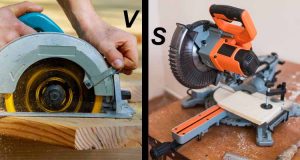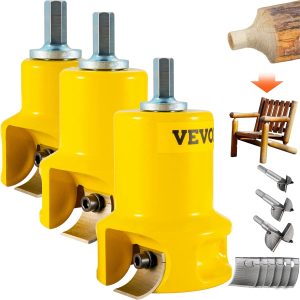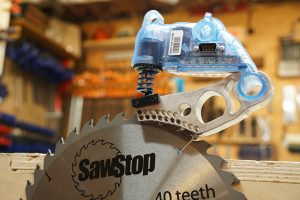When selecting the right blade for cutting tasks, understanding TPI (Teeth Per Inch) is essential. TPI refers to the number of teeth along one inch of a blade, which directly influences the cutting speed, precision, and smoothness of the finish. Blades with lower TPI are suited for fast, rough cuts, while higher TPI blades excel in detailed, fine cuts.
A 10 TPI blade strikes a balance between speed and precision, making it a versatile choice for various applications. It is commonly used in woodworking for cutting hardwoods and softwoods and in metalworking for slicing through thin metals and pipes.
Choosing the right TPI ensures efficiency and prevents material damage. What is a 10 TPI blade used for, users can achieve optimal results, whether tackling DIY projects, professional woodworking, or metalworking tasks.
What Does 10 TPI Mean?
A blade labeled as 10 TPI (Teeth Per Inch) has ten teeth along every inch of its cutting edge. This configuration strikes a balance between cutting speed and the smoothness of the cut.
Fewer teeth (low TPI) create larger gaps between them, enabling faster, rougher cuts suitable for thick materials like softwoods. In contrast, higher TPI blades have more teeth packed together, producing finer, slower cuts ideal for delicate or thin materials.
The 10 TPI blade offers versatility, excelling in medium-density materials like hardwoods, thin metals, and plastics. It cuts efficiently without compromising too much on precision, making it a popular choice for general-purpose use.
How TPI Affects Performance
- Low TPI: Faster cutting but rougher edges; ideal for thick wood and heavy-duty materials.
- High TPI: Slower cutting with smoother finishes; suitable for thin metal or fine woodworking.
- 10 TPI: A balanced performance, making it versatile across various applications.
What is a 10 TPI Blade Used For
It is very important to know about what is a 10 TPI blade used for A 10 TPI blade is a versatile cutting tool, ideal for various applications due to its balanced performance in speed and precision.
Woodworking Applications
In woodworking, a 10 TPI blade works effectively for cutting both softwoods like pine and hardwoods such as oak or maple. It offers moderate cutting speed and delivers a smooth finish, making it suitable for tasks like shaping furniture components, trimming boards, or crafting decorative pieces. The balanced teeth spacing ensures minimal splintering, making it a reliable choice for hobbyists and professionals alike.
Metalworking Applications
For metalworking, a 10 TPI blade is excellent for cutting thin metals and tubing, such as aluminum, copper, or light-gauge steel. It balances efficiency and precision, providing clean cuts without excessive effort. This makes it ideal for projects requiring neatly finished edges, such as assembling metal frames or cutting pipes.
General-Purpose Applications
Beyond specific trades, the 10 TPI blade shines in DIY projects and home improvement tasks. Whether sawing through plastic pipes, composite materials, or medium-density boards, it adapts well to various materials and tasks. Its versatility ensures it can handle most household cutting needs, making it a go-to blade for those seeking efficiency and reliability in a single tool.
Ideal Materials for a 10 TPI Blade
A 10 TPI blade is a versatile tool capable of cutting a range of materials with precision and efficiency. Its teeth configuration makes it suitable for the following:
Wood
A 10 TPI blade works well with softwoods like pine, cedar, and fir, offering smooth cuts for general carpentry and furniture-making. It also handles hardwoods like oak, maple, and cherry with ease, delivering clean edges for finer woodworking projects. This balance between speed and smoothness makes it ideal for medium-density wooden boards and panels.
Metal
In metalworking, this blade is perfect for cutting light-gauge steel, aluminum, and copper tubing. It provides enough precision for clean, burr-free edges while maintaining moderate cutting speed, making it suitable for tasks like trimming pipes or shaping metal sheets for construction or crafting.
Plastic
The 10 TPI blade efficiently cuts through plastic pipes, PVC, and acrylic sheets without cracking or splintering the material. This makes it valuable for plumbing work, DIY creations, or crafting projects involving plastic.
Composite Materials
For materials like MDF (Medium-Density Fiberboard) and plywood, the blade ensures smooth cuts without chipping. It’s a great option for building cabinets, shelving, or decorative pieces, offering versatility for both professional and home projects.
Types of Saws That Use 10 TPI Blades
Reciprocating Saws
A 10 TPI blade in a reciprocating saw is ideal for demolition tasks and cutting materials like wood, thin metal, or PVC pipes with moderate precision and speed.
Jigsaws
In jigsaws, a 10 TPI blade excels at making smooth, controlled cuts in curved or straight patterns, especially on wood and thin plastics.
Band Saws
Band saws equipped with a 10 TPI blade are perfect for detailed woodworking and metalworking tasks, delivering clean and precise cuts in medium-density materials.
Hand Saws
For manual cutting, 10 TPI hand saws are suitable for crafting and carpentry projects, balancing speed and finish for wood and light materials.
Limitations of a 10 TPI Blade
Not Suitable for Ultra-Fine or Heavy-Duty Cuts
A 10 TPI blade is not ideal for ultra-fine cuts requiring high precision, such as in delicate veneers or intricate patterns, where a higher TPI blade (e.g., 18-24 TPI) is preferable. Similarly, it struggles with heavy-duty cuts in thick, dense materials like large timbers or thick metal pipes, where a lower TPI blade (e.g., 6-8 TPI) would perform better.
Potential for Tear-Out on Certain Materials
When cutting very thin or brittle materials, such as thin plywood or acrylic, the blade may cause tear-out or cracking due to its moderate tooth spacing. A finer TPI blade minimizes this risk.
Conclusion
A 10 TPI blade is a versatile and reliable tool that balances speed and precision, making it ideal for a variety of applications. Whether you’re cutting hardwood, softwood, thin metal, plastic, or composite materials, this blade provides efficient and clean results.
Its ability to adapt to woodworking, metalworking, and DIY tasks makes it a must-have for both professionals and hobbyists.
Choosing the right blade is crucial to achieving the best results. If you’re looking for a blade that can handle medium-density materials with ease while offering a smooth finish, the blade is an excellent option.
Evaluate your needs and consider adding a 10 TPI blade to your toolkit. With its versatility and performance, it’s a smart choice for tackling your next project with efficiency and precision.





